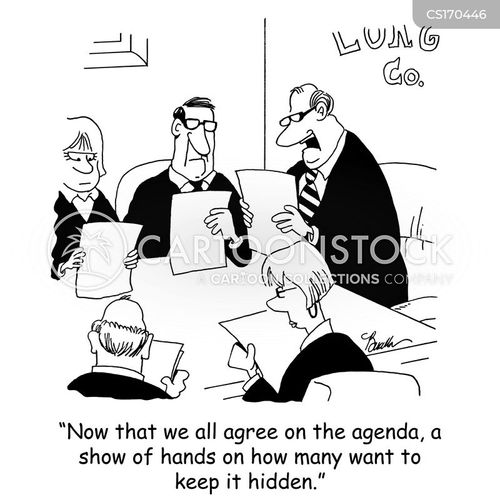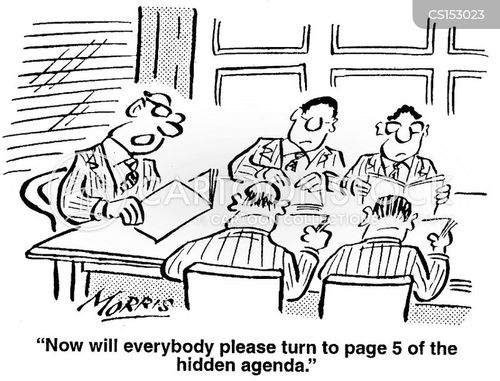Tag Archives: Hidden Agenda
How to Fix Bullying Culture in Health Care
https://www.kevinmd.com/blog/2018/06/how-to-fix-bullying-in-health-care.html

When we think of bullying, we’re usually worrying about our school-age kids or remembering bad experiences from high school.
We learn quickly in the health care field that bullies don’t change once they enter the clinical world. Health care, with its incredible differential in knowledge, authority and pay creates large power differentials and easily generates subordinate/superior relationship dynamics.
Bullying occurs within professions between trainees and trainers and faculty, and across clinical areas when there are knowledge differences such as between specialists and primary care. Mistreatment also frequently occurs in an interdisciplinary manner between physicians and non-physicians, supervisors and direct reports, nurses, and technicians.
For many (bully and bullied alike), this has been considered the price of entry into the healthcare arena.
The fears generated by the power differentials are very real:
- loss of one’s job
- loss of referrals
- loss of business to a competitor
Through trial and error, bullies find the right formula to preserve the power dynamics.
These unspoken fears create a culture of silence. It then becomes very difficult to achieve a culture of high reliability, which operates on a framework of deference to everyone’s expertise with an intense preoccupation with avoiding errors and failure. I have seen this culture of silence lead to OR fires and use of new OR equipment and procedures without adequate training or supervision.
An organization-wide “anti-bullying statement” should stop the problem, right? Not likely. An organization where I once served in administration had such a statement but also had a “hidden agenda,” i.e., ‘”We need these doctors to bring in business and need these nurses’ experience.” It led to confusion as to what the organization would stand for. Staff began accepting physician rounding at 10 p.m. and used equipment in the OR without proper training.
Working with the medical staff leadership, we opened some honest conversations around patient safety. Both groups were surprised. The medical staff thought administration was OK with the unsafe behaviors; the administration team hadn’t even been made aware of them until that point.
Having a policy against disruptive physicians and nurses is a Band-Aid for a much deeper issue. Many physicians rightly resent the implication that a legitimate disagreement with another healthcare professional can immediately and irrevocably label one “disruptive” without a fair hearing. Stories of false accusations fuel the need for physicians to protect each other, to the detriment of improving the system.
There are more effective ways to address this complex problem. Those on the “wrong side” of the power differential need scripting to defuse the confrontation. For example, a nurse being yelling at by a physician about being paged at 2:00 a.m. regarding “non-urgent orders” could neutralize the situation by calling attention to the behavior, while still allowing an escape route for de-escalation by saying “It sounds like you are having a bad night. Are you yelling at me or simply venting?” Simple lines like these can empower line staff to safely de-escalate these situations and re-train those on the “right side” of the power differential.
Now, a single physician or nurse practicing scripting won’t be able to implement a culture change. It’s up to medical and nursing officers to establish the expectation that physicians and nurses will learn and apply such tools.
Medical staff officers must enlighten clinicians on how a culture of fear leads to more complications and patient harm. Medical errors occur when the safety systems designed to catch an error before it reaches a patient are short-circuited, which is commonplace if physicians give in to the doctor yelling the loudest.
Research from the Vanderbilt Center for Patient and Professional Advocacy in Patient Advocacy Reporting System (PARS) and Co-Worker Observation Reporting System (CORS) databases supports the notion that truly disruptive physicians are the minority and can be identified by staff and patient complaints. It further validates the potentially adverse outcomes and unsafe environment physician bullies perpetuate.
Their research also shows that “what gets measured, matters” as these “disruptive providers” don’t always need to be reported to NPDB. Some physicians simply need to understand that their behavior, though considered acceptable in past generations, needs to change.
With new scripting to manage an increasingly difficult health care environment and clear expectations laid out by medical staff officers, it’s entirely reasonable to expect the same zero tolerance for bullying in health care environments that now exists in our children’s schools.
Cartoon – Leadership Conflict

Cartoon – Put It Someplace Where We can Find It

The Six Letter Word Healthcare Solutions Providers are Coveting & How to Get It
https://www.linkedin.com/pulse/six-letter-word-healthcare-solutions-providers-how-get-stamatinos/
If you’re like most people, you’re looking ahead to the New Year and thinking about what you would like to accomplish. With innovation being on the brink in healthcare the last several years, one thing has surely taken place: restricted access to the right people in order to talk about your solution.
It may sound very simple on the surface; however, navigating the murky waters of healthcare successfully towards gaining access to the decision maker is difficult. And if it’s your goal to gain “Access” in the New Year, it’s a highly coveted and ambitious one.
When the healthcare world was less commoditized, conveying trust was enough to make the sale. Today, there’s simply too much noise in the market place and erodes the ability to gain traction or trust. This leads to many solutions providers ending up swimming in the dreaded sea of similar.
3 Ways Trust Can Be Ruined In an Instant
Gaining access to a decision maker has a lot to do with compatibility and reputation. If you have a great reputation, they’re more likely to listen to what you have to say. Compatibility is not just about how well your personalities mesh. It has more to do with how the healthcare solutions provider sees you and whether or not they trust you.
Trust is vital in any relationship; especially, a sales relationship. It’s been said that trust is the foundation upon which salespeople will achieve success. It will keep your customers coming back and choosing you over your competitors. Unfortunately, trust can be lost in an instant. Here are three ways you can lose the trust of a healthcare solutions provider.
1. Having a Hidden Agenda
A lot of salespeople are focused solely on sales. While sales are important—after all, sales are the lifeline of any organization looking to survive and thrive—it shouldn’t be the only focus. A salesperson doesn’t necessarily have to blatantly show or tell the client that they’re focused solely on themselves. Subconsciously, clients can pick up on even the subtlest of signs. When they feel like they’re not as important as the sale, trust goes right out the window.
Here’s the cool thing, you can eliminate rejection forever simply by giving up the hidden agenda of hoping to make a sale. Instead, be sure that everything you say and do aligns with basic mindset that you’re there to help identify and solve their issues.
2. Moving Too Quickly
Customers, especially one’s in healthcare, don’t like to be forced to do anything. In many situations, customers feel like they’re almost being bullied by a salesperson. Trying to move the relationship too quickly is detrimental to the trusted relationship between the customer and salesperson. Relationships are complex and multi-dimensional, which means that pressure leads to resistance and road blocks in your trust equity building efforts.
Contemplate letting go of trying to close the sale or get the appointment. What you’ll discover is that you don’t have to take responsibility for moving the sales process forward.
Simply focus your conversation on the problems that you can help prospects solve. By not jumping the gun and trying to move the sales process forward, you’ll learn that your potential customers will give you the direction you need.
3. Having No Understanding or Empathy for the Customer
Everyone wants to feel understood; it’s a basic human essential. At the very least, they want those around them to feel some empathy for what they’re going through, even if they can’t completely understand the situation. Your Potential clients & customers feel the same way. They have bad days, they may be dealing with difficult life circumstances, or they may be overwhelmed by all of their responsibilities at work.
Trust will be lost if you or anyone on your sales team fails to acknowledge the challenges that your customers are going through. In essence, the customer will feel like their feelings, even their existence, have been belittled. And, when they feel this way there is no way they’re going to trust the person who is contributing to them feel this way.
How to Build Trust and Gain Continual Access to Potential Customers
What will it take for healthcare solutions provider to start gaining access to the decision makers during the New Year? There are three steps they can take.
1. Tell the Truth
There’s no better way to earn a client’s trust than with honesty. Clients want to know what you can and can’t provide for them. Stretching the truth to gain the sale will only lead to disappointment, both for them and for your wallet.
2. Embrace Transparency
This goes hand-in-hand with honesty. Keep your promises for sure, however, don’t start making promises that you can’t keep. A lack of honesty and authenticity will definitely have an adverse effect on your reputation with the decision-makers.
3. Replace “Selling” With “Caring”
Those in the healthcare field enter the field because they want to help other people. They’re constantly caring for others. They need to be cared for, too. This is where you come in. If you make your customers feel well cared for, they’re sure to become loyal customers.
Instead of burning a lead by asking “probing” questions to qualify a potential client, you might want to consider how you can add value through concrete insights and build trust beforehand.
Moving Ahead, Access Will Be Predicated Upon Building “Trust Equity”
In the world of quotas and benchmarks things have become watered down and sales conversations have somehow become surface level and NOT authentic.
The currency of the new economy is trust. And you need TRUST beforehand to even get ACCESS.
Building “trust equity” is a long-term, never-ending effort of communicating, listening, building trust and establishing credibility. My belief is that you’ll be more likely to win over customers’ trust over time and tap into a well of abundance that’ll never dry out.
Learn How You Measure Up on the “Trusted-Access” Scale
Like any business strategy, determine what measurements need to be in place to determine effectiveness. Have a strong grip on what those KPI’s are and manage towards those goals each month.
Cartoon – We’ve Downsized Everyone Who Knew

Cartoon – Now that we all agree on the agenda

Cartoon – Meeting in Ten Minutes

Cartoon -We’ve downsized everyone who knew

Cartoon – Please turn to page 5




